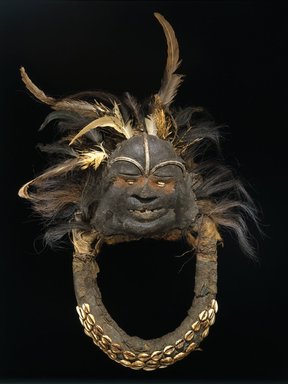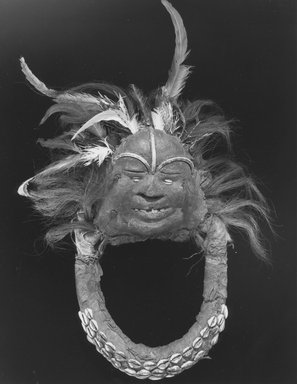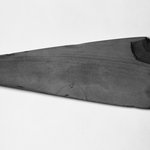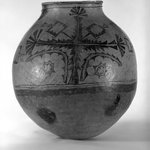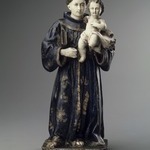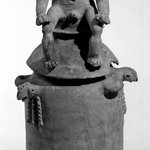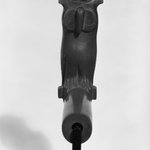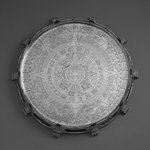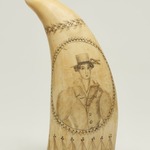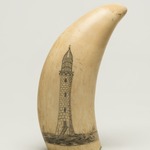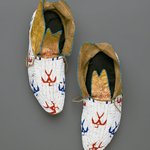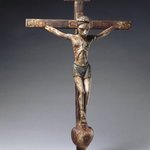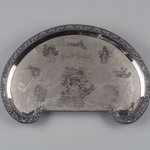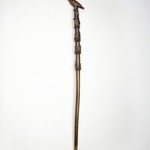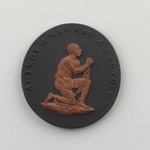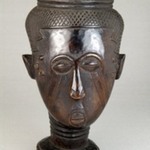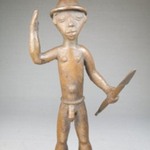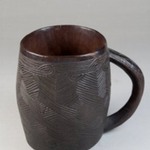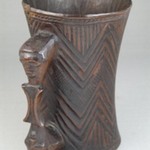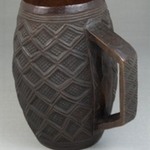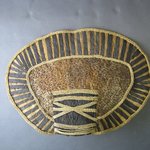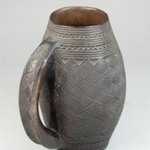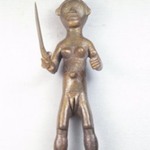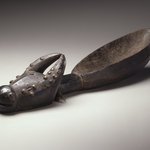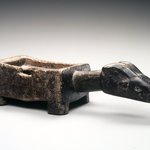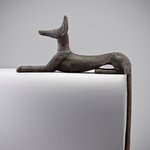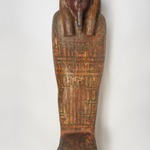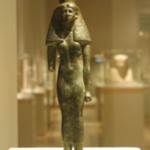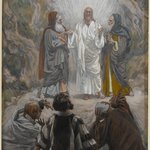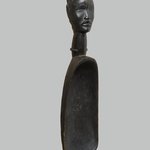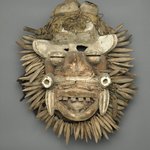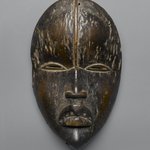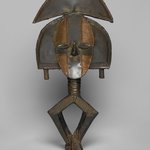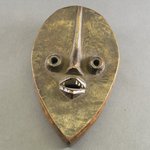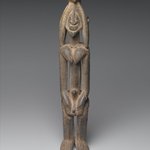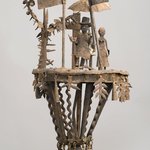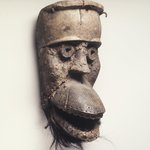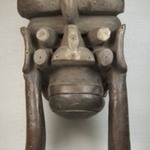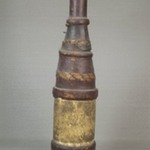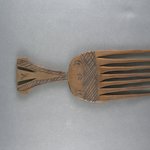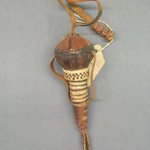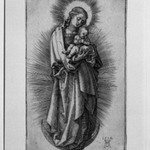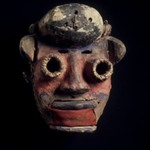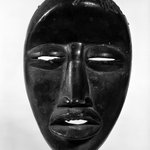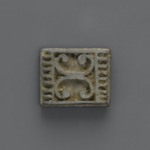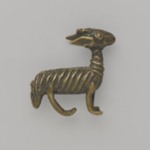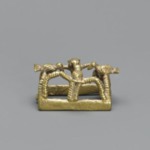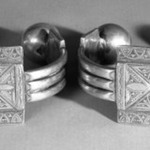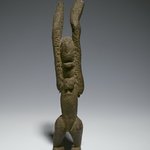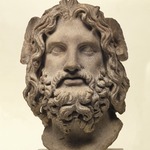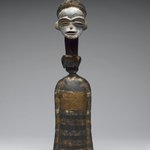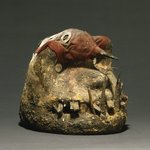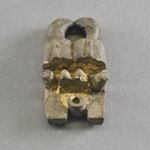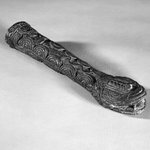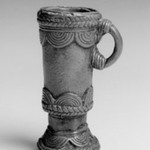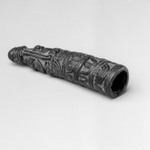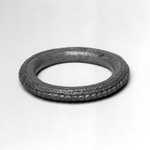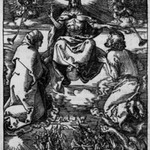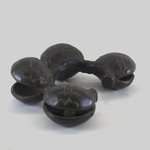Divination Object (Gbaule)
Arts of Africa
This object creates a frightening and otherworldly effect. Gbaule are divination objects used by the We to determine the causes of illness and to identify evil forces. A diviner holds the gbaule while in a trance. He is asked questions, and the movement of the gbaule indicates a response.
The divination society associated with this object was created by a man of the neighboring Krou people who had served as a soldier in France in World War I, and it became quite popular in the following decade. This origin explains why a head such as this one is also called a commandant.
MEDIUM
Clay, feathers, porcupine quills, cloth, aluminum, cowrie shells, leather, glass, rattan, rice heads, hair, wood, pigment
DATES
early 20th century
DIMENSIONS
22 1/2 x 16 1/2 x 3 1/2 in. (57.2 x 41.9 x 8.9 cm)
(show scale)
ACCESSION NUMBER
1992.196.3
CREDIT LINE
Gift of Blake Robinson
CATALOGUE DESCRIPTION
The humanoid face is made of clay with aluminum eyebrows and a ridge on the forehead. The eyes are of cowry shell. A band of orange pigment extends across the eyes. The face is attached to a rattan structure with a loop at the lower end. The back side is covered with leather and a loop with cloth to which cowry shells are attached. The coiffure of the face is composed of tufts of cow's tail hair, feathers, and heads of rice. The four teeth are pieces of glass. Condition: stable but fragile.
MUSEUM LOCATION
This item is not on view
CAPTION
We. Divination Object (Gbaule), early 20th century. Clay, feathers, porcupine quills, cloth, aluminum, cowrie shells, leather, glass, rattan, rice heads, hair, wood, pigment, 22 1/2 x 16 1/2 x 3 1/2 in. (57.2 x 41.9 x 8.9 cm). Brooklyn Museum, Gift of Blake Robinson, 1992.196.3. Creative Commons-BY (Photo: Brooklyn Museum, 1992.196.3_edited_SL1.jpg)
IMAGE
overall, 1992.196.3_edited_SL1.jpg. Brooklyn Museum photograph
"CUR" at the beginning of an image file name means that the image was created by a curatorial staff member. These study images may be digital point-and-shoot photographs, when we don\'t yet have high-quality studio photography, or they may be scans of older negatives, slides, or photographic prints, providing historical documentation of the object.
RIGHTS STATEMENT
Creative Commons-BY
You may download and use Brooklyn Museum images of this three-dimensional work in accordance with a
Creative Commons license. Fair use, as understood under the United States Copyright Act, may also apply.
Please include caption information from this page and credit the Brooklyn Museum. If you need a high resolution file, please fill out our online
application form (charges apply).
For further information about copyright, we recommend resources at the
United States Library of Congress,
Cornell University,
Copyright and Cultural Institutions: Guidelines for U.S. Libraries, Archives, and Museums, and
Copyright Watch.
For more information about the Museum's rights project, including how rights types are assigned, please see our
blog posts on copyright.
If you have any information regarding this work and rights to it, please contact
copyright@brooklynmuseum.org.
RECORD COMPLETENESS
Not every record you will find here is complete. More information is available for some works than for others, and some entries have been updated more recently. Records are frequently reviewed and revised, and
we welcome any additional information you might have.
